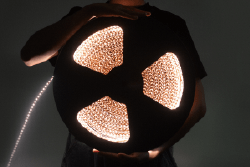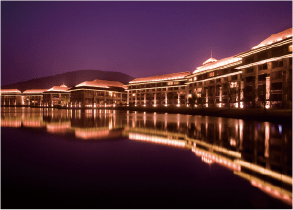Introduction
Indian weddings are recognized for his or her grandeur, traditions, and rich cultural heritage. One of probably the most important features of an Indian wedding ceremony is the bride. Indian brides are enchanting, vibrant, and carry with them the essence of their diverse cultural backgrounds. In this article, we’ll take a closer take a look at who Indian brides are, the customs and traditions they follow, and the sweetness they convey to the ceremony.
The Diversity of Indian Brides
India is a land of immense range, and this reflects in its brides as nicely. Indian brides come from various ethnicities, each with their distinctive customs, apparel, and rituals. Consider the next elements of Indian brides that make them intriguing:
Attire: A Riot of Colors and Embellishments
Indian brides are known for their beautiful attire, which varies from area to area. Each state in India has its conventional wedding clothes, ranging from the magnificent pink and gold sarees of North India, to the vibrant Kanjeevaram silk sarees adorned by South Indian brides. These attires are beautifully embellished with intricate embroidery, zari work, and precious stones, including to the overall splendor.
Bridal Jewelry: An Expression of Opulence
Indian brides are bedecked with beautiful jewelry that showcases their status, wealth, and aesthetic sense. From intricate gold necklaces to ornate earrings, bangles, and anklets, each piece of knickknack holds cultural significance. The designs and supplies utilized in bridal jewelry differ based on regional traditions and personal preferences. Whether it is the elegant polki jewelry of Rajasthan or the temple jewellery of South India, each bit adds to the radiance of the bride.
Mehndi: The Art of Henna
One of probably the most cherished traditions of Indian weddings is the application of mehndi (henna) on the arms and feet of the bride. Mehndi is known for its intricate and delightful http://foreign-bride.asia/indian-brides patterns that symbolize love, prosperity, and fertility. Mehndi ceremonies are an integral part of the pre-wedding celebrations, the place the bride and her female relatives come together to adorn their hands and sing conventional songs. The deep pink shade of mehndi is considered auspicious and is believed to bring good luck to the bride.
Traditions and Customs: Blending the Old and the New
Indian weddings are a treasure trove of age-old customs and traditions which have been passed down via generations. These rituals vary across completely different communities and areas however typically contain ceremonies just like the Sangeet (musical night), Haldi (turmeric application), and the Vidaai (bidding farewell to the bride). Indian brides gracefully embrace these customs, guaranteeing that their marriage ceremony ceremonies are steeped in tradition and which means.
The Beauty and Strength of Indian Brides
Beyond their physical appearance, Indian brides are recognized for his or her inner energy, poise, and the ability to mix custom with fashionable values. They carry the load of their cultural heritage on their shoulders while embracing change and progress. Here are some qualities that make Indian brides truly remarkable:
Resilience: Navigating through Change
Indian brides are often expected to navigate via the changes caused by marriage and strike a steadiness between their cultural roots and the calls for of modern society. They adapt to new environments, learning to mix custom with up to date values. Whether it’s transferring to a unique metropolis or adjusting to new household dynamics, Indian brides showcase their resilience and adaptability.
Family Values: The Foundation of Indian Weddings
Indian brides hold robust household values close to their hearts. They understand the importance of family bonds and attempt to maintain up harmonious relationships inside their new families. Indian weddings usually are not just a union between two people but a merging of two households, and Indian brides play a pivotal role in fostering unity, love, and respect within their households.
Beauty Beyond Physicality
The fantastic thing about Indian brides transcends physicality. It lies of their empathy, kindness, and the love they carry to their relationships. Indian brides are known for his or her nurturing nature and their ability to create a warm and loving environment for their family members. Their magnificence shines by way of within the care they bestow upon their families and their commitment to building a contented home.
In Conclusion
Indian brides usually are not just symbols of magnificence and beauty but embodiments of tradition, resilience, and energy. They deliver vibrancy, splendor, and a wealthy cultural heritage to the marriage ceremonies. Indian brides embody the richness of range and showcase the unity amidst this variety. As they embark on their new journeys, Indian brides carry with them the values, customs, and traditions that make their weddings really special.
FAQ
1. What is the significance of the Indian bride’s apparel on the marriage day?
The Indian bride’s attire holds nice cultural significance on her wedding ceremony day. Traditional Indian bridal attire usually includes a saree or lehenga, adorned with intricate embroidery, elaborations, and vibrant colours. The pink shade is particularly in style as it symbolizes fertility and happiness. The bride additionally wears various ornate jewellery pieces, such as a necklace, earrings, bangles, and a maang tikka (a jewel worn on the forehead), which symbolize prosperity and blessings. The apparel and jewelry reflect the bride’s cultural heritage and contribute to the general grandeur of the wedding celebrations.
2. Are arranged marriages still widespread amongst Indian brides today?
Arranged marriages are still prevalent in Indian society, although their frequency has significantly decreased in city areas. In conventional families, parents and relatives play a key role find a suitable match for his or her sons or daughters. However, the dynamics have developed over time. Nowadays, arranged marriages often contain a degree of consent and involvement from each the people. They may have the chance to satisfy, get to know each other, and contemplate components like compatibility, training, and personal preferences before making a call. These trendy organized marriages strike a balance between cultural traditions and particular person autonomy.
3. What cultural rituals and ceremonies are part of an Indian wedding?
Indian weddings are elaborate affairs filled with varied rituals and ceremonies, often lasting a quantity of days. Some of the important thing ceremonies embody:
-
Mehendi: The bride’s arms and feet are adorned with intricate henna patterns, symbolizing love and happiness.
-
Sangeet: A musical celebration the place household and associates carry out traditional dances and songs.
-
Haldi: A ceremony where the bride and groom are applied turmeric paste, believed to deliver a natural glow and purification.
-
Baraat: The groom arrives on the wedding venue accompanied by a procession of household and pals, dancing and celebrating.
-
Varmala: The bride and groom exchange floral garlands, signifying their acceptance of one another.
-
Kanyadaan: The bride’s father gives her away to the groom, symbolizing his acceptance and belief within the groom.
-
Mangalsutra and Sindoor: The groom ties a sacred necklace (mangalsutra) across the bride’s neck, marking her as a married girl. He additionally applies sindoor (vermilion) on her forehead, signifying her marital status.
4. What is the role of astrology and horoscopes in Indian weddings?
Astrology and horoscopes play a significant role in Indian weddings. Before finalizing a wedding proposal, families of the bride and groom typically seek the advice of astrologers to match their horoscopes and decide compatibility. This course of is known as "kundali matching." Based on varied astrological components like birth charts, planetary positions, and astrological compatibility, the astrologer provides insights into the couple’s future and marital harmony. If any major discrepancies arise, adjustments or rituals may be carried out to mitigate the potential unfavorable effects. This apply is deeply rooted in Indian culture and is believed to ensure a happy and affluent married life.
5. What are some widespread pre-wedding magnificence rituals that Indian brides follow?
Indian brides have a wealthy custom of pre-wedding magnificence rituals aimed at enhancing their beauty and radiance for the large day. Some common pre-wedding beauty rituals embody:
-
Ubtan: The bride’s body is adorned with a special paste made from turmeric, sandalwood, gram flour, and different herbs. It is believed to cleanse, brighten, and soften the pores and skin.
-
Haldi Ceremony: Before the marriage day, the bride’s household applies haldi (turmeric) paste on her face and body. This ritual is undertaken for its purifying and beautifying properties.
-
Beauty Treatments: Indian brides typically take pleasure in spa treatments, facials, and physique scrubs to achieve a wholesome glow and skin rejuvenation.
-
Haircare: The bride’s hair is pampered with nourishing oils, herbal hair masks, and elaborate hairstyles. It is adorned with fresh flowers or bridal hair equipment.
-
Skincare: Bridal skincare routines involve utilizing pure components like rose water, aloe vera, and saffron to maintain a clear and radiant complexion.
These beauty rituals help the bride feel assured, rejuvenated, and glamorous on her big day.

















